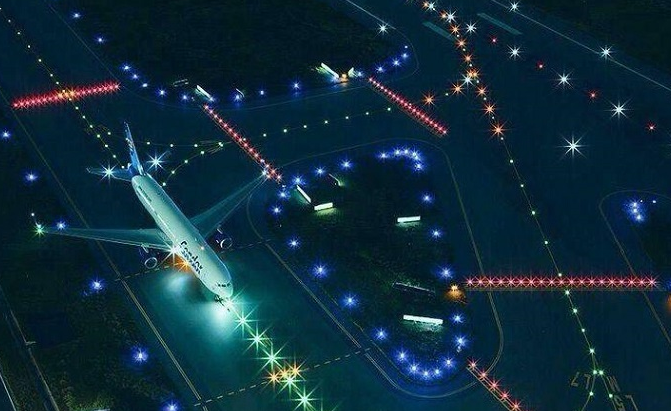In the realm of aviation, safety is paramount. Every aspect of airport operations, from runway maintenance to air traffic control, is meticulously regulated to ensure the highest standards of safety and efficiency. One critical component of airport infrastructure that often goes unnoticed but plays a crucial role in aviation safety is airfield lighting. As airports strive to uphold compliance with stringent regulatory frameworks, understanding and adhering to airfield lighting compliance standards emerge as imperative tasks. In this blog, we delve into the essential role of lighting compliance, exploring the regulatory frameworks, challenges, and best practices in navigating this crucial aspect of airport operations.
Understanding Airfield Lighting Compliance
Airfield lighting serves as the guiding beacon for aircraft navigating the complex network of runways, taxiways, and aprons within an airport. These lighting systems encompass a variety of fixtures, including runway edge lights, taxiway lights, approach lighting systems, and runway centerline lights, among others. The primary purpose of airfield lighting is to enhance visibility and provide visual cues to pilots, enabling safe takeoffs, landings, and taxiing operations, especially during low visibility conditions such as night-time or adverse weather.
Airfield compliance refers to the adherence to regulatory standards and guidelines set forth by aviation authorities and regulatory bodies. These standards encompass various aspects, including installation, maintenance, operation, and performance of airfield lighting systems. Compliance ensures that airports maintain a consistent level of safety and operational efficiency across their airfield infrastructure, mitigating risks and enhancing overall aviation safety.
Regulatory Frameworks and Standards
The regulatory landscape governing lighting compliance is multi-faceted, encompassing international, national, and industry-specific standards. The International Civil Aviation Organization (ICAO) sets forth global standards and recommended practices for airfield lighting through Annex 14 to the Convention on International Civil Aviation. Annex 14 outlines specifications for runway, taxiway, and apron lighting, as well as requirements for lighting intensity, colour, and alignment.
In addition to international standards, regulatory bodies at the national level, such as the Federal Aviation Administration (FAA) in the United States and the European Union Aviation Safety Agency (EASA) in Europe, establish and enforce airfield lighting regulations tailored to specific jurisdictions. These regulations often incorporate ICAO standards while adding supplementary requirements to address regional factors and operational considerations.
Furthermore, industry organizations and associations, such as the Airports Council International (ACI) and the International Air Transport Association (IATA), play a crucial role in shaping airfield lighting standards and best practices through collaboration with regulatory bodies and industry stakeholders. These organizations provide guidance, training, and resources to support airports in achieving and maintaining compliance with airfield lighting standards.
Challenges in Achieving Compliance
Despite the clear regulatory frameworks and standards in place, achieving and maintaining airfield lighting compliance poses several challenges for airports and aviation stakeholders. One significant challenge is the complexity of airfield lighting systems, which comprise numerous components, fixtures, and control systems distributed across vast airport facilities. Ensuring the proper installation, operation, and maintenance of these systems requires meticulous planning, coordination, and resources.
Moreover, evolving technology and advancements in lighting technology present both opportunities and challenges for airfield compliance. While innovations such as LED lighting offer energy efficiency, durability, and enhanced visibility, their integration into existing infrastructure may require retrofitting and system upgrades to meet regulatory requirements. Additionally, ensuring compatibility and interoperability between legacy and modern lighting systems is essential to maintaining seamless operations and compliance.
Furthermore, environmental factors such as weather conditions, wildlife hazards, and geographical considerations add complexity to lighting compliance. Airports located in regions prone to extreme weather phenomena, such as heavy snowfall or tropical storms, must implement robust contingency plans and de-icing procedures to ensure the continuous operation of airfield lighting systems. Similarly, addressing wildlife hazards, such as bird strikes, requires proactive measures to mitigate risks and ensure aviation safety.
Best Practices for Navigating Airfield Lighting Compliance
Despite the challenges inherent in achieving lighting compliance, airports can adopt several best practices to navigate regulatory frameworks effectively and maintain operational excellence:
- Comprehensive Risk Assessment: Conduct regular risk assessments to identify potential hazards and vulnerabilities within airfield lighting systems, including environmental, operational, and technical factors.
- Proactive Maintenance and Inspection: Implementing proactive maintenance programs and routine inspections to detect and address issues with airfield lighting systems promptly, ensuring compliance with regulatory requirements and operational readiness.
- Training and Professional Development: Investing in training and professional development programs for airport personnel involved in airfield operations, including pilots, air traffic controllers, maintenance technicians, and ground staff, to enhance their knowledge and proficiency in lighting compliance.
- Utilization of Technology: Leveraging technology solutions such as remote monitoring, predictive maintenance, and digital asset management systems to optimize the performance, efficiency, and reliability of airfield lighting systems while minimizing downtime and operational disruptions.
- Collaboration and Information Sharing: Establishing collaborative partnerships with regulatory authorities, industry organizations, and fellow airports to share best practices, lessons learned, and emerging trends in lighting compliance, fostering a culture of continuous improvement and innovation.
Conclusion
In conclusion, airfield lighting compliance plays a vital role in ensuring the safety, efficiency, and reliability of airport operations. By navigating regulatory frameworks, understanding industry standards, and implementing best practices, airports can uphold compliance with airfield lighting regulations, mitigating risks and enhancing aviation safety. As airports continue to evolve and expand to meet growing demand, maintaining a steadfast commitment to lighting compliance remains essential to safeguarding the skies and facilitating safe and seamless air travel for passengers and cargo alike.

